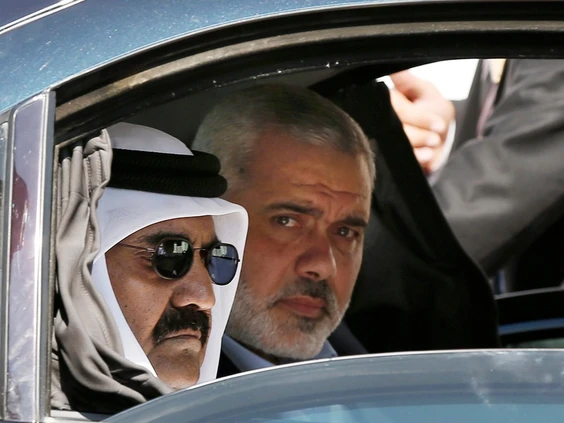From Famine to Fortune: How Hamas Leaders Prospered While Gaza Starved
While the world weeps for starving children in Gaza, few stop to ask where the billions in aid went.
Despite this enormous investment, Gaza remains crippled by poverty, food insecurity, collapsing infrastructure, and now famine. Children are dying of malnutrition in a territory that has received more per capita humanitarian aid than many nations in Africa or Asia. The failure is not rooted in global apathy, but in decades of financial corruption, militant governance, and ideological extremism.
Compare this to Somalia, one of the world’s poorest nations, with a national budget of roughly $1 billion. Hamas alone pulls in nearly that much each year through a mix of foreign sponsorship, border taxation, overseas investments, and tunnel smuggling. Its foreign investment portfolio reportedly generates over $500 million annually, while Iran contributes $70 to $100 million a year, and taxation at crossings and tunnels adds another $300 to $450 million. Yet despite all this income, Gaza cannot feed its children.
Countries like Rwanda and Bangladesh, both having suffered genocide, poverty, and war, have made significant strides by prioritising education, healthcare, and economic reform over militarism. Rwanda’s poverty rate has dropped by over 25% since 2000. Bangladesh has dramatically improved child mortality, infrastructure, and access to education. These countries, with comparable or smaller budgets, do not experience the levels of famine now unfolding in Gaza.
A major reason is resource diversion. According to multiple UN reports and journalists on the ground, Hamas operates internal black markets, intercepting humanitarian supplies and reselling them to desperate civilians. The group imposes taxes on food, fuel, and medicine brought in through tunnels and border crossings. In practice, food meant to save lives becomes currency for Hamas’s political and military ambitions. The result is that aid goes in, but the hungry stay hungry.
While Gazans suffer, the Hamas elite prosper. Many reside in Qatar, travelling on business class flights and staying in five-star hotels. Reports have estimated some Hamas leaders to have personal fortunes of up to $4 billion. Photographs of one leader’s wife carrying a designer handbag while residents of Gaza scrounged for water and bread circulated widely. This contrast between starvation and luxury is not incidental. It is the consequence of leadership that has chosen self-enrichment over public service.
The hypocrisy doesn’t stop at Gaza’s borders. In Western countries, Palestinian-themed merchandise; flags, bracelets, keffiyehs, is marketed widely by influencers and activist groups. But almost none of the revenue from these sales goes to humanitarian aid. Most is pocketed by vendors or funneled into political branding. There is no regulated mechanism to ensure that proceeds support credible relief efforts. As a result, Gaza’s suffering is often commodified, not relieved.
Even more absurd is the expectation placed on Israel. The country is routinely condemned for not doing enough to support Gaza, even though Hamas, a group committed to Israel’s destruction, governs the enclave. Hamas fires rockets into civilian areas, uses hospitals and schools as military outposts, and trains child soldiers. No sovereign state would be expected to feed and supply a territory controlled by an armed enemy sworn to its annihilation. Nevertheless, Israel has continued to facilitate aid deliveries and has even participated in airdropping humanitarian supplies, despite the risk of it being stolen or misused by Hamas. Hamas has also blamed Israeli air drops for harming Palestinians. They turn every bit of help into blame.
This is not a story of neglect. It is the story of aid squandered, leadership corrupted, and civilians sacrificed. Billions of dollars flowed in, yet the most vulnerable starved. Not because the world turned away, but because Hamas turned on its own people.
Meanwhile, global outrage remains selectively loud. The same voices that chant for Gaza often ignore far worse humanitarian disasters. In Sudan, millions are at risk of famine and ethnic cleansing. In the Democratic Republic of Congo, millions have died in decades-long conflict. Haiti faces state collapse and gang rule. These crises barely register on social media or in public protests. They are politically inconvenient, so they are largely ignored.
No amount of international aid can feed the hungry if those in power choose war over welfare and ideology over humanity. Until the leadership in Gaza puts its people first, the cycle of tragedy will continue, fuelled not by a lack of money, but by the refusal to govern with conscience.


Comments
Post a Comment